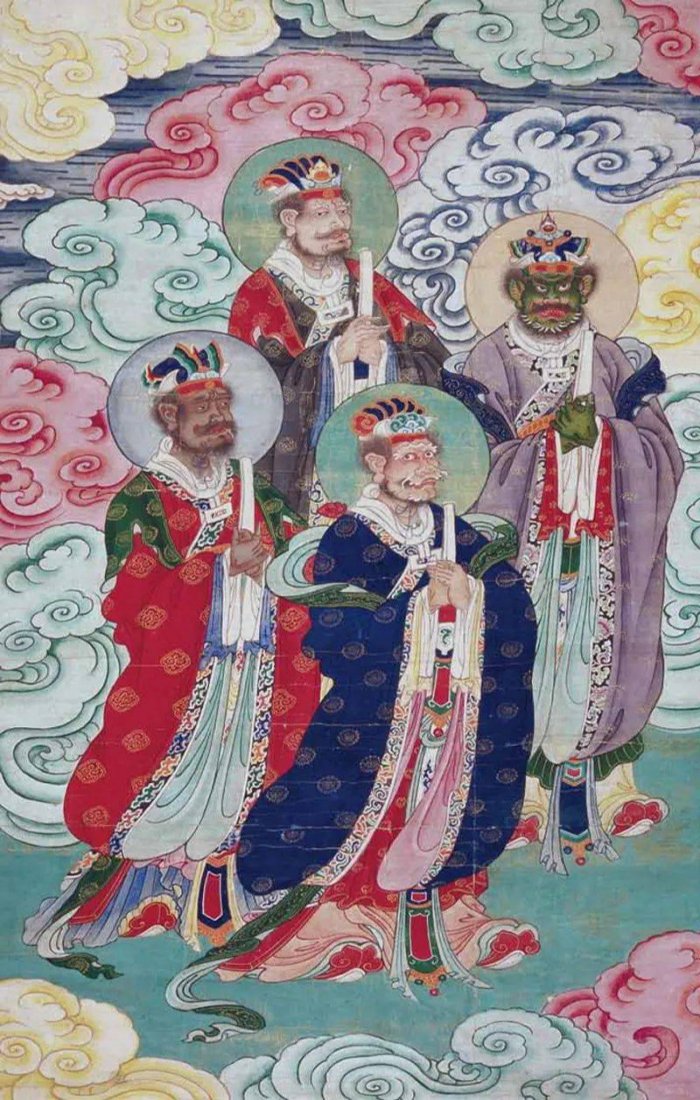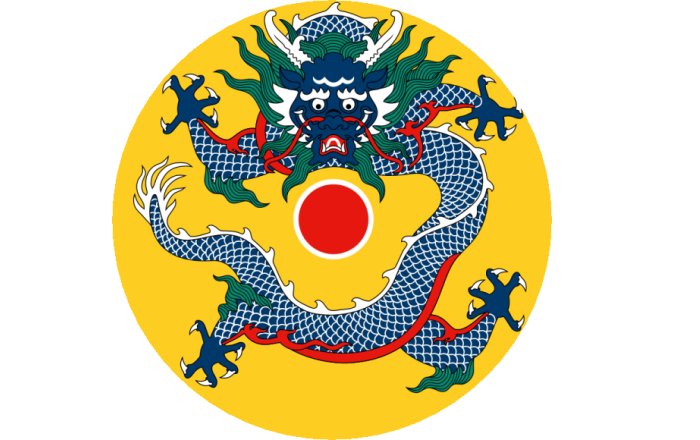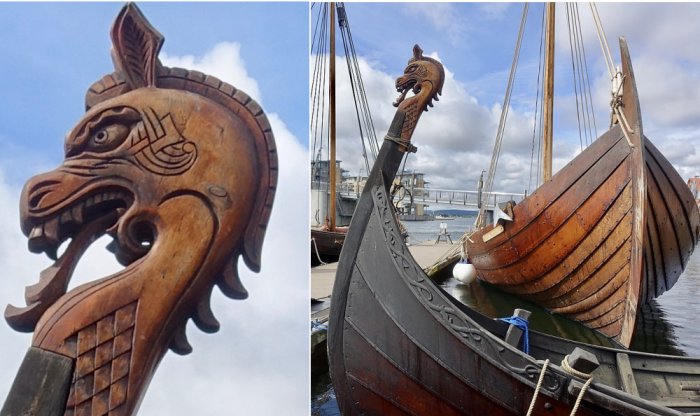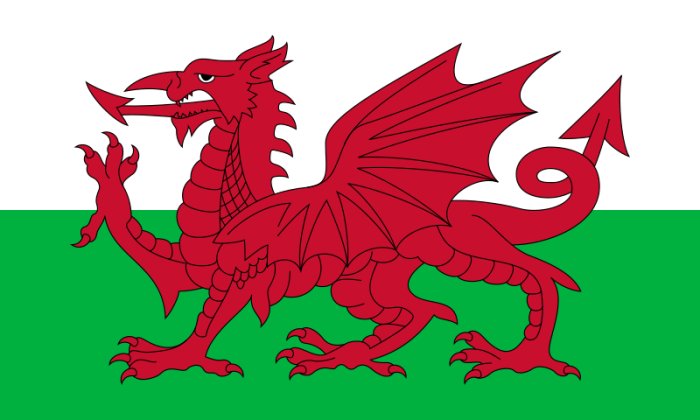Dragons And Dragon Kings In Ancient Mythology
A. Sutherland - AncientPages.com - We encounter dragons in almost every ancient world culture. Dragons played an essential role in the beliefs of our ancestors and were depicted in various ways.
Four Seas Dragon King. Credits: Unknown (Qing Dynasty) - Public Domain
Dragons can be placed in East and West groups, regarded as either good or very fearsome and evil creatures.
Dragons in Ancient Chinese Mythology
In ancient China, the dragon was a highly significant creature that became a symbol of the Emperor, and his throne was sometimes called the Dragon Throne. Ancient Chinese believed dragons were in control of the weather and water. These creatures were said to be able to manipulate oceans, floods, tornadoes, and storms.
There are nine distinctive Chinese dragons; some are serpent-like creatures with large bodies and long heads. The dragon in China is a benign creature that is said to bring wisdom, power, and luck. They are famous for their goodness, warding off evil, protecting the innocent, and ensuring safety.
Tradition and celebration of New Year in China can be traced to a dragon named Nien (or "year").
The Traditional Rounded Chinese Dragon is usually seen on imperial buildings, official uniforms, and coins. The design dated back to Tang Dynasty (7th-8th century). Please also note this is not the emblem of the Qing dynasty. Image credit: Sodacan - CC BY-SA 4.0
Nien was a legendary wild beast that attacked people at the end of the old year. Villagers would use loud noises and bright lights to scare the creature away, a practice that slowly morphed into the Chinese New Year festivities. Today the dragon has its year on the Chinese calendar.
Dragons In British And Scandinavian Mythology
Dragons were often depicted as wingless creatures in the British Isles and Scandinavia. In this part of the world, depictions of the dragon tended to show a malevolent creature that was very difficult to kill.
The West dragon was wingless, lived in dark places or wells, and guarded hoard treasures. Approaching the dragon was almost impossible because of its poisonous fire breath.
Dragons in British and Scandinavian mythology often appear in stories when a prince tries to save a young maiden from being abducted by a fearsome animal. If he can slay the dragon, he can become the new King and win the girl as his bride.
Dragon Kings In Chinese Mythology
In ancient Chinese mythology, we encounter five enormous dragon kings who were rainmakers and rulers of the waters.
Four of them were stationed at the cardinal points and ruled the seas. Their chief had his abode in the middle. The five dragon kings were named Lung Wang.
The dragon kings of China lived in crystal palaces under the sea. Their underwater dwellings were part of the mysterious Underworld that could only be reached through underground mountain caves and special secret entrances. When the Water Dragons rose to the surface, they caused typhoons, and when they flew through the air caused heavy rain and hurricanes. The Dragon Kings are among the deified forces of nature of the Taoist religion.
Dragon's Head As A Viking Symbol
A dragon's head was one of the most famous symbols of the Vikings. The Viking dragon was, in many ways, a representation of the Midgard Serpent, a mythical sea creature who fought with the Norse god Thor.
Many ships were equipped with carved dragon heads on top of the stem, while the stern often was shaped like a dragon's tail.
Vikings built ships with huge dragonheads because they wanted to appear as frightening as possible from a long distance.
Prows of viking ships and medieval boats moored to the pier in the harbour of the small city of Tønsberg, Norway: "Saga Oseberg", a 2012 built full scale replica of the "Oseberg Ship", a Viking ship from about AD 820 discovered in a burial mound near Tønsberg, with the prow ending in a spiral shaped serpent's head "Saga Farmann", a 2018 built reconstrucion of the "Klåstadskipet" ship from about AD 820 "Sæheimr", built 2016, inspired by the "Fjørtoftbåten" boat from about AD 860, decorated with a dragon's head on the fore stem. Image credit: Wolfmann - CC BY-SA 4.0 - The photograph was taken in August 2019. - more.
Vikings called their longships "Drakkar" or dragon ships, and the dragon was a powerful and fearsome symbol of war.
The Pendragons Of Wales
Many have seen the Welsh flag features a red dragon and that the Prince of Wales uses rampant dragons on his banner.
Flag of Wales. Image credit: Unknown - Public Domain
The old British word "draig" means dragon (and warrior or ‘leader,’ while the "pen" meant head. The two words combined form Pendragon or Pen Draig, a noble surname in early Britain as early as the fifth century. The dragon symbol continued to be used by the last native Welsh princes of Wales, Llewelyn ap Gruffydd and Owain Glyndwr, during their struggles against English occupation in the 14th and 15th centuries.
The Pendragon name in Welsh literature includes Uther Pendragon, father of the legendary King Arthur.
Ancient And Modern Superstitions About Dragons
In ancient times, there were also many superstitions about the dragon; surprisingly, some persist even today.
It was, for example, believed that the blood of the dragon held unique properties that could give a person the power to see into the future. On the other hand, it was also said that if a knight dipped the tip of his sword into the dragon's blood and stabbed you with it, the wound would never heal.
Dragon teeth were thought to bring good luck to those who possessed them.
The dragon has survived as a powerful symbol in many parts of the world.
Written by – A. Sutherland AncientPages.com Staff Writer
Updated on Apr 1, 2024
Copyright © AncientPages.com All rights reserved. This material may not be published, broadcast, rewritten or redistributed in whole or part without the express written permission of AncientPages.com
Expand for referencesDoug Niles - Dragons: The Myths, Legends, and Lore
Carol Rose - Giants, Monsters, and Dragons: An Encyclopedia of Folklore, Legend, and Myth
More From Ancient Pages
-
 Secret Ancient Knowledge Of The Toltecs Examined
Civilizations | Aug 16, 2019
Secret Ancient Knowledge Of The Toltecs Examined
Civilizations | Aug 16, 2019 -
 Disappearance Of Neanderthals: Were Inbreeding And Demographic Shifts Responsible?
Archaeology | Nov 28, 2019
Disappearance Of Neanderthals: Were Inbreeding And Demographic Shifts Responsible?
Archaeology | Nov 28, 2019 -
 Unusual Find – Headless Skeletons Discovered In A 7000-Year-Old Mass Grave In Slovakia
Archaeology | Jan 12, 2023
Unusual Find – Headless Skeletons Discovered In A 7000-Year-Old Mass Grave In Slovakia
Archaeology | Jan 12, 2023 -
 Huge Ancient Underground Stone Circle Discovered Inside Cornwall Neolithic Henge
Archaeology | May 21, 2022
Huge Ancient Underground Stone Circle Discovered Inside Cornwall Neolithic Henge
Archaeology | May 21, 2022 -
 Controversial Discovery Of 5,7-Million-Year-Old Footprints On Crete Could Re-Write History Of Human Evolution
Archaeology | Sep 5, 2017
Controversial Discovery Of 5,7-Million-Year-Old Footprints On Crete Could Re-Write History Of Human Evolution
Archaeology | Sep 5, 2017 -
 Unknown Saxon Village And Bronze Age Artifacts Found Near Ely, Cambridgeshire
Archaeology | Sep 18, 2023
Unknown Saxon Village And Bronze Age Artifacts Found Near Ely, Cambridgeshire
Archaeology | Sep 18, 2023 -
 Wreck Of Historic Royal Ship ‘Gloucester’ Discovered Off The English Coast
Archaeology | Jun 10, 2022
Wreck Of Historic Royal Ship ‘Gloucester’ Discovered Off The English Coast
Archaeology | Jun 10, 2022 -
 Ancient DNA Reveals The Earliest Evidence Of The Last Massive Human Migration To Western Europe
DNA | Jul 24, 2023
Ancient DNA Reveals The Earliest Evidence Of The Last Massive Human Migration To Western Europe
DNA | Jul 24, 2023 -
 The First ‘Viking’ Was A Bronze Age Man
Civilizations | Jul 26, 2024
The First ‘Viking’ Was A Bronze Age Man
Civilizations | Jul 26, 2024 -
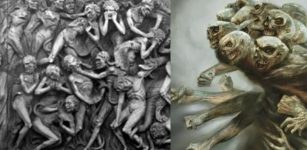 Utukku: Sumerian Spirit From The Underground That Obeyed The Will Of God Anu
Featured Stories | Jun 17, 2016
Utukku: Sumerian Spirit From The Underground That Obeyed The Will Of God Anu
Featured Stories | Jun 17, 2016 -
 Mysterious Tiahuanaco Empire Established By The Sons Of The Sun – An Unknown Chapter Of Prehistory
Featured Stories | Oct 30, 2018
Mysterious Tiahuanaco Empire Established By The Sons Of The Sun – An Unknown Chapter Of Prehistory
Featured Stories | Oct 30, 2018 -
 On This Day In History: Solar Storm Known As The Carrington Event Took Place – On August 28, 1859
News | Aug 28, 2016
On This Day In History: Solar Storm Known As The Carrington Event Took Place – On August 28, 1859
News | Aug 28, 2016 -
 Ruins Of Ancient City Emerged From The Sand In Kerman Province, Iran
Archaeology | Apr 15, 2017
Ruins Of Ancient City Emerged From The Sand In Kerman Province, Iran
Archaeology | Apr 15, 2017 -
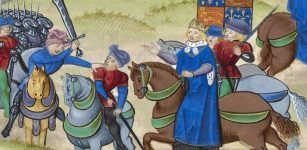 On This Day In History: Peasants’ Revolt First Great Popular Uprising In English History – On June 12, 1381
News | Jun 12, 2016
On This Day In History: Peasants’ Revolt First Great Popular Uprising In English History – On June 12, 1381
News | Jun 12, 2016 -
 Ancient Greeks Built Sacred Temples On Earthquake Sites To Gain Spiritual Power
Archaeology | Sep 19, 2017
Ancient Greeks Built Sacred Temples On Earthquake Sites To Gain Spiritual Power
Archaeology | Sep 19, 2017 -
 The Ebers Papyrus – Most Famous Plant Medicine ‘Encyclopedia’ Of Ancient Egypt
Civilizations | Feb 3, 2016
The Ebers Papyrus – Most Famous Plant Medicine ‘Encyclopedia’ Of Ancient Egypt
Civilizations | Feb 3, 2016 -
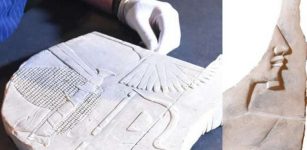 Mysterious Depiction Of Pharaoh Hatshepsut
Archaeology | May 17, 2018
Mysterious Depiction Of Pharaoh Hatshepsut
Archaeology | May 17, 2018 -
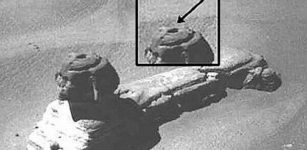 Head Of The Great Sphinx Was Changed – It’s The Gateway To A Secret Underground City– Historians Suggest
Featured Stories | Jan 20, 2018
Head Of The Great Sphinx Was Changed – It’s The Gateway To A Secret Underground City– Historians Suggest
Featured Stories | Jan 20, 2018 -
 Mysterious Ancient Tully Monster Is So Weird It Cannot Be Classified
Fossils | Feb 22, 2017
Mysterious Ancient Tully Monster Is So Weird It Cannot Be Classified
Fossils | Feb 22, 2017 -
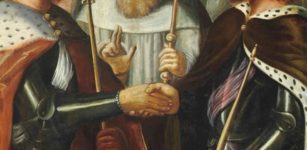 On This Day In History: Treaty Of Picquigny – Negotiations Between England And France – On Aug 29, 1475
News | Aug 29, 2017
On This Day In History: Treaty Of Picquigny – Negotiations Between England And France – On Aug 29, 1475
News | Aug 29, 2017

